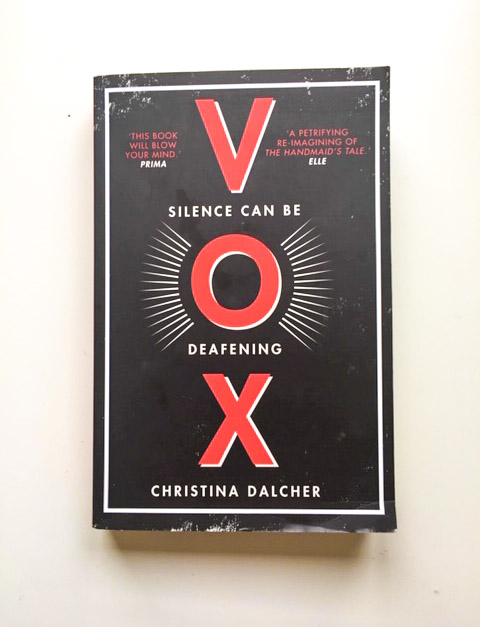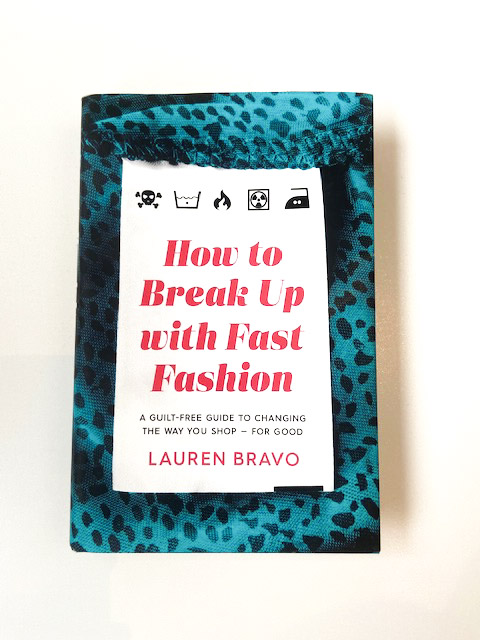As promised, I will continue to update the world with my fascinating reading habits. My book review this month includes another mixed bag of fiction and non-fiction.
The first book was an unexpected surprise which had not been on my list but had enticed me so much on a recent trip to Waterstones that it was purchased and read as a matter of urgency.
The second was a book I had flirted with reading for a while. I had fallen out of feminist dystopian fiction and needed a little fling to rekindle the flame.
The third was a much needed information dump about all things fast-fashion. If you read this blog, you will know that I make an effort wherever I can to shop sustainably, and fashion is an area that has been making me uneasy for a while. I needed someone to lay out some solutions for me, and Lauren Bravo did just that!
Have you read any of these? Let me know what you think!

I chanced upon this book in Waterstones as I was looking for something quite different. The dustcover promised ‘a gift to all Austen lovers’, so I just had to try it.
Hornby’s novel builds on the well known fact that ‘in the last years of her life, Cassandra Austen looked over the letters that she and her sister had exchanged’ burning any that she deemed too ‘open and confidential’.
Cassandra recognised that her sister’s talent would be admired and discussed far into the future. She also recognised that her talent would not be the only topic of discussion and that the intimate details of their family life would be up for examination. She took the opportunity to attempt to control the narrative and leave the world with the best possible image of her darling sister Jane.
Hornby imagines that Cassandra’s diligent rewriting of history extended even to correspondence with their close family friends the Fowles. She tells the tale of an elderly Cassandra imposing on her grieving friends as they pack up the family home after the death of their father, the pastor. She sets about finding and destroying any incriminating letters shared between Jane and Eliza Fowles (née Lloyd) who had died some years before.
Although this story is fictional, it is entirely possible that such a thing happened. Hornby does justice to Jane’s memory and that of the incredible, strong women that surrounded her – she tells the stories (as Jane did) of those who were threatened by obscurity in a deeply patriarchal world.

This book had been on my radar for quite some time but, as much as I hate to admit this, I have become a bit fed up of feminist dystopian literature in the last few years.
There are undoubtedly some incredible masterpieces in this genre – Margaret Atwood’s The Handmaid’s Tale and Naomi Alderman’s The Power to name just two – but following the dramatisation of The Handmaids Tale a few years ago, it feels like you can’t move in Waterstones for stumbling over a feminist fever dream of a novel.
That said, I did actually enjoy this novel. It tells the story of a female scientist in a dystopian future America where women are forced to wear cuffs that zap them with electricity if they speak more than a 100 words in a day. They have been driven from the workplace and back into the home, in an effort to recreate the ‘pure woman’ of the past whose role in life was mother and subservient wife.
The novel was, at times, a little overblown and simplistic, but it kept me gripped with a kind of morbid fascination. The plot was deeply entertaining; dramatic, disturbing, but with a ludicrously idealistic ending. Everyone wants a satisfying ending, of course, but I do believe there is such a thing as tying up a story just a little too neatly. Stylistically, the novel’s short chapters, intended to propel the narrative forward, instead chopped a little too much into the storytelling.
The most effective message in the novel came via the protagonist’s constant berating of her younger self for being too preoccupied to pick up the placards until it was already too late. It was a reminder to all of us who are too busy to march for climate change on a Friday morning, or too concerned with work to keep up with changes to abortion law, that now is the time to care. In fact, yesterday was. Do not look down from your comfortable pedestal of privilege and distance, Dalcher warns, and think that these issues will not affect you too.
I stopped scoffing so much at the inflated drama of the plot, however, when I opened the Sunday Times one morning and stumbled straight into an article about the Trad wife movement in America. Terrifyingly, this is a group of women who believe in total subservience to their husbands. It doesn’t seem all too far removed from the ‘Pure Women’ movement of the book, especially when you learn that one of the tactics they use is a ‘shut the fuck up’ rule, encouraging women not to talk back to their husband but listen meekly to all he has to say.
The explosion of feminist literature over the last few years should come as no surprise really. Margaret Atwood published her groundbreaking novel in 1985. It was birthed into a world where feminism was entering the mainstream, women were present in the workforce in higher level positions than ever before, and there was hope for a promising future. In 2020, we are seeing the pendulum swing from a predominance of left-wing politics to a scary acceptance of right-wing ideology. Following Trump’s election in 2016 and his immediate attack on reproductive rights, these types of novels are a necessary conversation starter.
Just as Atwood warned us in 1985, Alderman, Dalcher, and the myriad other female novelists contributing to this genre today will not let us become complacent about our rights to live, work and, even speak as women.

As someone who is in the process of reassessing my everyday actions and trying to make better decisions around sustainability and responsible living, this was exactly the book I had been looking for.
While I have felt good about the changes I have made – giving up meat, drastically reducing the amount of single-use plastic I use, painstakingly switching every beauty product I use to a cruelty free option – I have been in a total quandary around fashion. I understand that we should shop only second hand, and purchase fewer, longer lasting (and more expensive) items, but as someone whose wardrobe consists almost exclusively of Topshop jeans and jumpers, this feels like an impossible task.
I don’t have an amazing eye for style, I am terrible at picking out gems in messy charity shops and I often give away items of clothes only to fall in love with them again when I see my sisters looking great in them. I don’t have the budget for higher end, more sustainable options and I don’t even like most of the ‘ethical’ clothing if I could afford it. But I don’t want to support unsustainable production methods and the unethical working conditions that are so prevalent in fast fashion. So basically, I haven’t bought a new item of clothing in about 6 months. I was given some things for Christmas, which I accepted with mixed feelings of glee at finally having something new to wear and guilt that my favourite pieces came from Topshop and H&M.
This book hasn’t really told me anything I don’t already know. As an already reformed shopper who never really enjoyed it in the first place, I wasn’t Bravo’s target market.
But it did take some of the pressure off my shopping haitus. Comparing giving up fast fashion to a difficult break up, Bravo guides us through ‘the fight’, ‘the split’ and ‘the rebound’. She highlights key statistics that we should be aware of (textile production produces an estimated 1.2 billion tonnes of CO2 per year, which is more than international flights and maritime shipping combined!), and guides us through a process of more sustainable shopping habits.
She urges us to become outfit repeaters, charity-shop treasure hunters, menders, thrifters, borrowers, lenders. She talks about the various apps that have appeared to make borrowing, renting and second hand shopping easier in the 21st century. And she advises us that if, after all that, we simply must pop into Zara, thats ok. As long as you can name three things you already own that will go well with whatever item of clothing you are about to purchase, and you can reasonably justify that you will wear it 30 times (thats a little more than twice a month for the next year). Then, and only then, can you buy it.
This book wasn’t drastically eye-opening for someone who has already started to do the work to reassess their toxic shopping habits, and it was so full of such specific pop references that I’m not sure it will age well, but it made an impossible task seem just that little bit more manageable and it kept me completely entertained throughout. As Bravo says: ‘We can only do the best we can. But most of us can probably do better than we are’.
Do you agree or totally disagree with of my thoughts? Do you totally love feminist dystopian literature? Let me know! And, as always, please comment with any recommendations – I am always on the hunt for a new favourite. Check out my other reviews to find out what else I’ve been reading this year!
